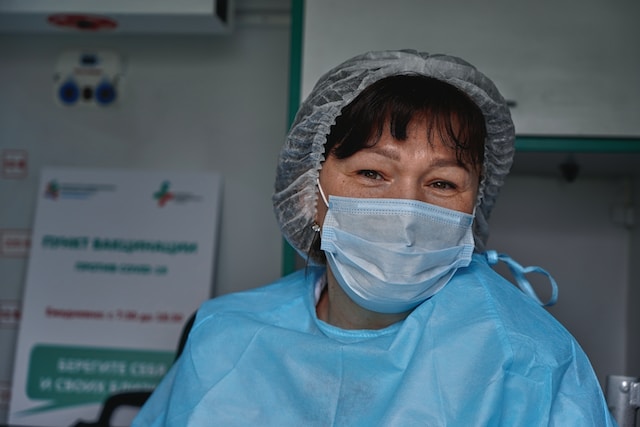Table of Contents:
- Background on Malpractice Insurance
- Factors Determining Insurance Costs
- Types of Malpractice Insurance Policies
- Ways to Reduce Premiums
- Real-life Case Studies
- Future Trends
- Conclusion
- Frequently Asked Questions (FAQs)
- How does CRNA malpractice insurance work?
- Do CRNAs pay malpractice insurance?
- Do CRNAs have to pay malpractice insurance?
- How much does malpractice insurance cost for CRNAs?
- Should CRNAs get malpractice insurance?
- What's the best CRNA malpractice insurance?
- Why do CRNAs need professional liability insurance?
- How to become a CRNA in Florida?
- Does UCF have a CRNA program?
- How to become a CRNA in the Army?
- How do you become a CRNA with a biology degree?
- How long is schooling for CRNA?
- How to become a CRNA from R.N.?
- How long does it take to be a CRNA?
- How do you become a CRNA without a BSN?
- How to become a CRNA in Texas?
- What degree do you need to be a CRNA?
- How long does it take to become a CRNA?
- How to become a CRNA fast?
- What do you need to be a CRNA?
- How much does a CRNA make a year?
"How much is CRNA Malpractice Insurance?" is a question that resonates deeply for every Certified Registered Nurse Anesthetist stepping into the healthcare landscape. CRNAs embody a pivotal thread in the healthcare system's intricate tapestry. Their critical role in patient care, especially in surgical settings, carries significant responsibilities and potential risks. Given the high stakes, malpractice insurance emerges as a mere formality and an indispensable shield safeguarding a CRNA's professional trajectory, reputation, and financial security.
This article delves deep into the multifaceted realm of malpractice insurance costs for CRNAs, aiming to provide a comprehensive insight into its importance, the variables influencing its price, and how best to navigate these waters adeptly.
Background on Malpractice Insurance
Malpractice insurance, a cornerstone in healthcare, has evolved significantly over the years. Its roots trace back to when the complexities of medical procedures began to grow, and with it, the inherent risks of potential errors and oversights.
What is Malpractice Insurance?
At its core, malpractice insurance is a type of professional liability insurance. It is designed to protect healthcare professionals, including CRNAs, from potential lawsuits arising from alleged mistakes or negligence in their practice. The coverage ensures that in the event of a claim, the insured individual's legal defense and potential liability costs are covered up to the policy's specified limits.
Why It's Indispensable
The importance of malpractice insurance can't be overstated. Medical professionals often find themselves at the forefront of legal challenges in a litigious society, even when they've exercised the utmost care. These lawsuits can be financially crippling, potentially jeopardizing the professional's career and personal assets.
Moreover, the psychological impact of facing a lawsuit can be profound. A robust malpractice insurance policy provides peace of mind, allowing professionals to focus on what they do best—providing quality patient care.
Evolution Over Time
Historically, malpractice has existed for centuries, but the formal structure of insurance to protect against it is relatively recent. With the rise of surgical procedures, specialized fields like anesthesia began to emerge, amplifying the need for specific protection like CRNA malpractice insurance.
In today's context, with the continued advancement of medical technologies and techniques, the landscape of malpractice insurance is ever-evolving, emphasizing the importance of staying informed and updated.
In summary, understanding the background and significance of malpractice insurance is crucial for any healthcare professional. It's not just about protection against financial setbacks but also about ensuring peace of mind in a profession where the stakes are invariably high.

Factors Determining Insurance Costs
The cost of malpractice insurance isn't arbitrary. Several components interplay to determine the premium a CRNA might pay. These factors reflect the perceived risk associated with insuring the professional. Let's delve into some of these determinants.
1. Geographical Location
The state or region where a CRNA practice can significantly impact the premium. Some areas, especially those with a history of high malpractice lawsuit payouts, might command higher rates. Additionally, the local cost of living and the density of the medical community can also influence rates.
2. Experience and Credentials
Newly certified CRNAs might find themselves paying higher premiums initially. However, these rates usually decrease as they garner experience and additional training or certifications.
3. Scope of Work and Specialty
The specific procedures a CRNA is involved in and any specialized areas of practice can influence the premium. Some areas of anesthesia might be perceived as riskier than others, leading to adjusted rates.
4. Type of Employer and Work Setting
CRNAs in large hospitals or academic institutions might benefit from group insurance policies, often leading to reduced individual rates. In contrast, those in private practice or smaller clinics might face higher premiums due to the lack of collective bargaining.
5. Claim History
A CRNA's past can come into play. Professionals with previous malpractice claims might pay higher premiums, reflecting the perceived increased risk to the insurer.
6. Coverage Details
The specifics of the policy chosen, such as policy limits, deductibles, and any additional riders or endorsements, can also affect the final cost. For instance, a policy with a higher coverage limit will naturally command a higher premium.
7. Risk Management Participation
Engaging in risk management programs or courses can sometimes lead to discounted rates, as these are proactive measures to reduce the potential for malpractice incidents.
Types of Malpractice Insurance Policies

When navigating the world of malpractice insurance, CRNAs will encounter different types of policies, each with unique characteristics and coverage implications. Understanding these types is crucial to ensure that one is adequately protected for various scenarios in one's professional journey.
1. Occurrence-Based Policies
An occurrence-based policy provides coverage for any incident when the policy is active, irrespective of when the claim is filed. This means that even if the procedure is no longer in effect, as long as the incident occurred while it was, the policy will cover the claim.
Pros:
- Long-term protection for incidents that occurred during the policy period.
- When switching policies or retiring, there is no need for "tail" coverage.
Cons:
- Typically more expensive than claims-made policies.
- Insurance providers may offer it less commonly.
2. Claims-Made Policies
This policy covers claims only if the incident and the claim occur while the policy is active. If a CRNA switches insurers or lets their policy lapse, they would need to purchase "tail" coverage to protect against any claims that might arise from incidents during the period the claims-made policy covered them.
Pros:
- Usually less expensive initially than occurrence-based policies.
- It is more common and might offer flexibility in terms of coverage options.
Cons:
- Requires tail coverage if the CRNA changes policies or stops practicing, which can be costly.
- Without tail coverage, there's a risk of being uninsured for past incidents.
3. Tail Coverage
This isn't a standalone policy but an extension of a claims-made one. Tail coverage, or an "extended reporting endorsement," protects a medical professional from claims that arise after a claims-made policy is terminated but stem from incidents that occurred during the active period of that policy.
Pros:
- Provides peace of mind for professionals transitioning between jobs or retiring.
- Ensures continued protection from prior incidents.
Cons:
- It can be expensive, sometimes costing as much as a full year's premium.
Ways to Reduce Premiums

For many CRNAs, malpractice insurance represents a significant yearly expense. However, there are strategies one can employ to mitigate these costs without compromising the quality of coverage. Let's explore tactics to reduce premiums and a table summarizing potential savings.
1. Risk Management Courses
Many insurance providers offer discounts to professionals who participate in risk management seminars or courses. By gaining further knowledge on minimizing potential malpractice risks, CRNAs enhance patient care and demonstrate to insurers their commitment to safe practice.
2. Bundling Policies
If a CRNA requires other types of insurance, such as general liability or property insurance, bundling these with a malpractice policy through the same provider might yield discounts.
3. Association Memberships
Being a part of professional associations often comes with perks. Some organizations negotiate group rates for their members, potentially reducing premiums.
4. Choosing Higher Deductibles
Choosing a higher deductible can lead to reduced premium expenses. However, it's essential to ensure that the deductible amount is affordable in the event of a claim.
5. Review and Compare Regularly
Insurance market dynamics change over time. Regularly reviewing and comparing policy options can ensure CRNAs are getting the best deal for their needs.
Potential Savings Table
| Strategy | Estimated Savings | Notes |
|---|---|---|
| Risk Management Courses | 5-10% off premium | Varies by insurer |
| Bundling Policies | Up to 15% off | Depends on number/type of policies bundled |
| Association Memberships | 5-20% off premium | Varies by association and insurer |
| Choosing Higher Deductibles | 10-25% off premium | Higher out-of-pocket in event of a claim |
| Review and Compare Regularly | Varies | Based on market conditions |
Real-life Case Studies

Exploring real-life case studies offers invaluable insights into the practical implications of malpractice insurance for CRNAs. These cases highlight the importance of having comprehensive coverage and the potential consequences of various situations.
1. Case Study: A Difficult Intubation
Background: A CRNA with ten years of experience encountered a particularly challenging intubation during a routine surgery. Despite the CRNA's expertise, the patient suffered vocal cord damage, leading to a significant change in the patient's voice.
Outcome: The patient pursued a malpractice claim, alleging negligence in intubation. Thanks to the CRNA's comprehensive malpractice insurance, the legal defense was fully covered, and a settlement was reached without exhausting the policy limits.
Key Takeaway: Even routine procedures can pose risks, emphasizing the importance of thorough coverage.
2. Case Study: Lack of Informed Consent
Background: A patient underwent a procedure requiring anesthesia. While the CRNA provided the standard care, there needed to be better communication regarding the potential side effects of the anesthesia drugs used.
Outcome: The patient experienced an adverse reaction and filed a claim citing lack of informed consent. Due to a robust malpractice policy, the CRNA was shielded from exorbitant out-of-pocket legal fees, and the matter was resolved.
Key Takeaway: Effective communication and documentation are crucial. Malpractice insurance serves as a safeguard in scenarios where oversights occur.
3. Case Study: Insurance Gap Exposure
Background: A CRNA switched employers and, in the transition, experienced a brief period without malpractice coverage. During this gap, a former patient filed a claim related to a procedure that occurred months prior.
Outcome: Without "tail" coverage from the previous claims-made policy, the CRNA was left unprotected and faced significant financial burdens from legal fees and the subsequent settlement.
Key Takeaway: Continuous coverage is paramount, especially when transitioning between jobs. Tail coverage can bridge potential gaps and ensure continuous protection.
Future Trends

As the healthcare landscape evolves, so do the challenges and nuances surrounding malpractice insurance. Let's delve into some anticipated shifts in the realm of malpractice insurance.
1. Increased Use of Telemedicine
With technological advancements and the challenges posed by global events like the COVID-19 pandemic, telemedicine is set to play a more significant role in patient care.
Implications for CRNAs: This could lead to new malpractice risks related to technology failures, data breaches, or miscommunications due to remote consultations. It might necessitate specialized coverage tailored for telehealth.
2. Rising Premium Costs
As medical treatments become more advanced and litigation becomes more frequent, the costs associated with malpractice claims might increase, driving up premiums.
Implications for CRNAs: Regularly reviewing and comparing policy options will be essential to ensure both affordability and comprehensive coverage.
3. Emphasis on Preventive Training
Insurance providers are likely to emphasize preventive measures more, offering training programs or courses aimed at reducing the chances of malpractice incidents.
Implications for CRNAs: Participation in such programs might lead to reduced risks and potential premium discounts.
4. Data Analytics in Premium Determination
Insurance providers are gradually integrating data analytics to assess risks more accurately. This can mean a more personalized insurance rate based on individual CRNA performance metrics, patient feedback, and more.
Implications for CRNAs: Keeping detailed, accurate records and continually striving for professional development could lead to more favorable insurance rates.
5. Shift Towards Group Policies
With the growing consolidation in the healthcare industry, there might be a trend towards group policies, where large healthcare entities negotiate bulk rates for their employees.
Implications for CRNAs: Such trends could provide cost-saving opportunities, but it's crucial to ensure that group policies offer sufficient individual coverage.

Conclusion
The realm of healthcare, with its intricate interplay of skill, trust, and risk, is perpetually evolving. For Certified Registered Nurse Anesthetists (CRNAs), being at the forefront of patient care comes with substantial responsibility. It's no surprise that malpractice insurance carries significant weight in the professional lives of CRNAs. "How much is CRNA Malpractice Insurance?" is more than just a query about costs; it's a deep dive into understanding the safety nets available in a field marked by its unpredictable nature.
Our exploration shows that malpractice insurance is more than just a checkbox in a CRNA's professional journey. Whether it's understanding the types of policies available, discerning the various factors that influence cost, or strategizing ways to make premiums more affordable, a depth of knowledge and decision-making is involved. The real-life case studies underscore the tangible impact of these choices, revealing how insurance can be the deciding factor in safeguarding a CRNA's career and financial stability.
But it's not just about the present; the future trends section reminds us that the healthcare landscape is constantly changing. Telemedicine, data analytics, and shifts in policy structures beckon CRNAs to be proactive, not just reactive. Staying abreast of these changes, anticipating challenges, and adapting is the way forward.
This exploration into CRNA malpractice insurance is a testament to the broader theme: Preparedness. Just as a CRNA meticulously prepares for each procedure, ensuring all tools are in place and all risks assessed, so should they approach their professional protection. Comprehensive malpractice insurance, tailored to individual needs and future professional trends, is an investment. It's an investment in peace of mind, career longevity, and the unwavering commitment to providing the best care possible to patients.
Frequently Asked Questions (FAQs)
How does CRNA malpractice insurance work?
- CRNA malpractice insurance provides coverage to CRNAs against potential lawsuits stemming from alleged negligence or harm caused to patients during the administration of anesthesia or other related clinical practices. Depending on the policy type, coverage could be for incidents occurring during the policy period or for claims made during the policy term.
Do CRNAs pay malpractice insurance?
- Yes, CRNAs often pay for malpractice insurance. However, in some employment settings, significantly more prominent institutions, the employer might cover the cost partially or in whole.
Do CRNAs have to pay malpractice insurance?
- While not always legally mandated, it's highly recommended for CRNAs to have malpractice insurance, given the risks associated with their profession. Whether they pay for it directly or their employer covers it varies based on employment agreements.
How much does malpractice insurance cost for CRNAs?
- The cost of malpractice insurance for CRNAs typically starts from $4,000 to $8,000 annually, but this can vary based on geographical location, experience level, and other factors.
Should CRNAs get malpractice insurance?
- Absolutely. Given the critical nature of their role and the potential for lawsuits, CRNAS must have protection against potential claims.
What's the best CRNA malpractice insurance?
- The "best" malpractice insurance varies based on individual needs. Researching various providers, comparing coverage details, and consulting peers or professional organizations for recommendations is essential.
Why do CRNAs need professional liability insurance?
- CRNAs administer anesthesia and play a vital role in surgeries and procedures. This responsibility comes with risks, including potential complications or perceived errors. Professional liability insurance protects CRNAs from these risks' financial and legal repercussions.
How to become a CRNA in Florida?
- To pursue a career as a Certified Registered Nurse Anesthetist (CRNA) in Florida, individuals must follow several steps: earn a Bachelor of Science in Nursing (BSN) degree, obtain registered nurse (RN) licensure, acquire experience in critical care environments, complete a graduate-level nurse anesthesia program, pass the National Certification Examination (NCE), and fulfill state-specific licensure requirements in Florida.
Does UCF have a CRNA program?
- As of my last update in January 2022, you need to check the University of Central Florida's (UCF) official website or contact their academic departments to get the most recent information about their programs.
How to become a CRNA in the Army?
- Becoming a CRNA in the Army involves completing a specialized Army Nurse Anesthetist program. In addition, the Army Medical Department might have specific requirements, including rank, years of service, or other prerequisites.
How do you become a CRNA with a biology degree?
- With a biology degree, one would first need to obtain a nursing degree and R.N. licensure. Following this, the steps include gaining critical care experience and completing a graduate-level nurse anesthesia program before taking the certification exam.
How long is schooling for CRNA?
- After obtaining an undergraduate nursing degree, nurse anesthesia programs typically last 24-36 months, resulting in a Master's or Doctorate.
How to become a CRNA from R.N.?
- An R.N. needs to gain critical care experience (usually 1-2 years or more), apply to and complete a graduate-level nurse anesthesia program, and pass the National Certification Examination (NCE).
How long does it take to be a CRNA?
- Including undergraduate studies, critical care experience, and graduate education, it can take 7 to 10 years or more to become a CRNA.
How do you become a CRNA without a BSN?
- Some programs might accept R.N.s with an associate degree if they have significant experience or other qualifications. However, these individuals will often still need to complete a graduate-level program in nurse anesthesia.
How to become a CRNA in Texas?
- Like other states, the path involves obtaining a BSN and R.N. licensure, gaining critical care experience, completing a nurse anesthesia program, and passing the NCE. Specific Texas licensure will also be necessary.
What degree do you need to be a CRNA?
- A Master's or Doctorate in Nurse Anesthesia is typically required after obtaining a BSN.
How long does it take to become a CRNA?
- The entire process, including undergraduate, experience, and graduate studies, can take between 7 to 10 years or more.
How to become a CRNA fast?
- While ensuring thorough training and experience is essential, some individuals expedite the process by entering accelerated BSN programs or choosing nurse anesthesia programs with shorter durations.
What do you need to be a CRNA?
- A BSN, R.N. licensure, critical care experience, completion of a nurse anesthesia program, and passing the National Certification Examination (NCE) are the fundamental steps.
How much does a CRNA make a year?
- Salaries for CRNAs can vary based on location, experience, and employment setting. As of my last update in 2022, the average salary for a CRNA in the U.S. was over $180,000, but this number can fluctuate.